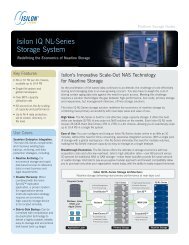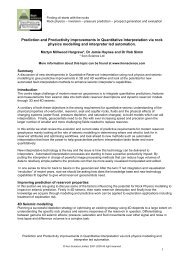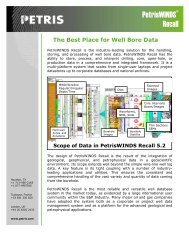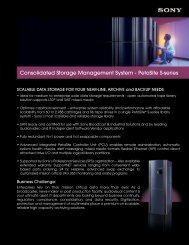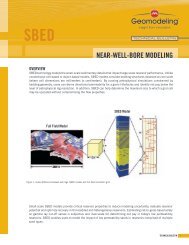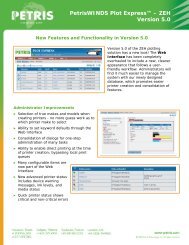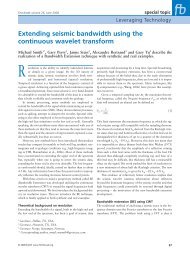Petrophysical fracture identification for rock physics ... - Net Brains
Petrophysical fracture identification for rock physics ... - Net Brains
Petrophysical fracture identification for rock physics ... - Net Brains
- No tags were found...
You also want an ePaper? Increase the reach of your titles
YUMPU automatically turns print PDFs into web optimized ePapers that Google loves.
etween the <strong>fracture</strong> porosity and <strong>fracture</strong> aperture predicted by the FCP method (d and e) andthe measured FMI logs (D and E).Carbonate <strong>rock</strong>s exhibit complicated pore textures. However, in practise, the Gassmannequations (1951) are still valid <strong>for</strong> porous media of any lithology if the observation frequencyis low and the background matrix is tight (Han, 2007). Figure 5 shows a comparison betweensynthetic gathers generated assuming the conventional porosity log (PHIE) and a <strong>fracture</strong>porosity log from FCP calculation. The tracks refer to the following: (a) Volume set; (b)Saturation set; (c) Vp (m/s); (d) Vs (m/s); (e) Density (g/cc); (f) Conventional PHIE (in red)and <strong>fracture</strong> porosity log from FCP (black); (g) Initial gather calculated from Vp, Vs andDensity; (h) Oil 80% gather using FCP; (i) Oil 80% gather using PHIE; (j) difference between(h) and (i); (k) Gas 90% gather using FCP; (l) Gas 90% gather using PHIE; (m) differencebetween (k) and (l); The difference plots in tracks (j) and (m) suggest that the <strong>fracture</strong>porosity needs to be taken into account in AVO studies, as a stronger dimming response isencountered at the top of the lower reservoir level (indicated by the horizontal red line) if onetakes into account the FCP calculated <strong>fracture</strong> porosity log.(a) (b) (c) (d) (e) (f) (g) (h) (i) (j) (k) (l) (m)Fig. 5 Fluid substitution effect on AVO with and without considering <strong>fracture</strong> porosity, asderived from the FCP method, <strong>for</strong> 80% oil (tracks h and i) and 90% gas (tracks k and l).ConclusionThe <strong>fracture</strong> comprehensive probability (FCP) is presented as a method to interpret essential<strong>fracture</strong> properties from conventional petrophysical log data. The FCP approach generates asynthetic image log that can be calibrated to FMI image logs. A case study from a gassaturated carbonate reservoir is also shown <strong>for</strong> the case study. A significant difference isobserved in the AVO response of the reservoir when the <strong>fracture</strong> parameters are incorporatedin the modelling. It is concluded that the FCP methodology is an important precursor to <strong>rock</strong><strong>physics</strong> studies when fracturing is expected to be significant but image log data areunavailable.ReferencesGassmann, F., [1951]. Elastic waves through a packing of spheres: Geo<strong>physics</strong> 16, 673-685.Han, D., H., [2007]. Velocity of Carbonate Rocks, CSRPB, University of Houston, Vol. No.P1-8.Sibbit, A.M, and Faivre, O., [1985]. The Dual laterolog response in <strong>fracture</strong> <strong>rock</strong>. SPWLA26 th Symposium.Yan. J., Lubbe, R., and Pillar, N., [2008]. Modified velocity model <strong>for</strong> seismic study via AVO,Journal of Seismic Exploration, Vol. 17, p371-390.71 st EAGE Conference & Exhibition — Amsterdam, The <strong>Net</strong>herlands, 8 - 11 June 2009



